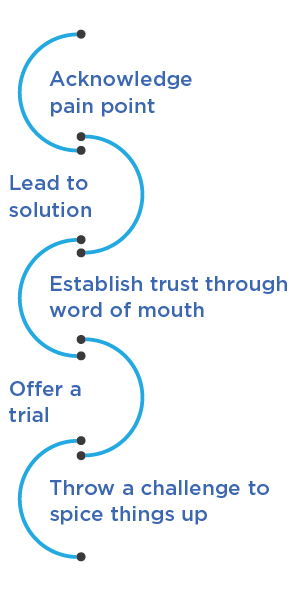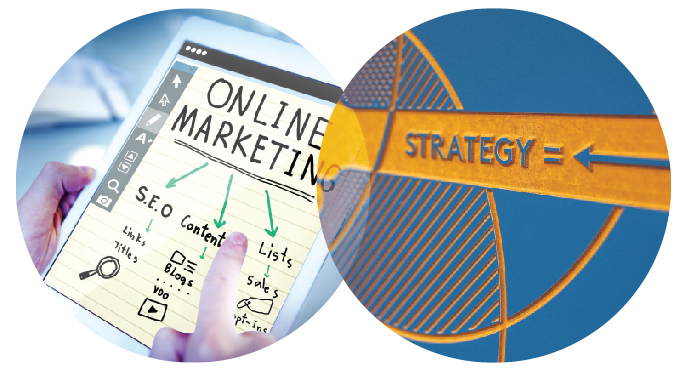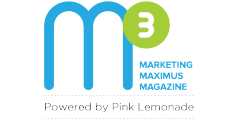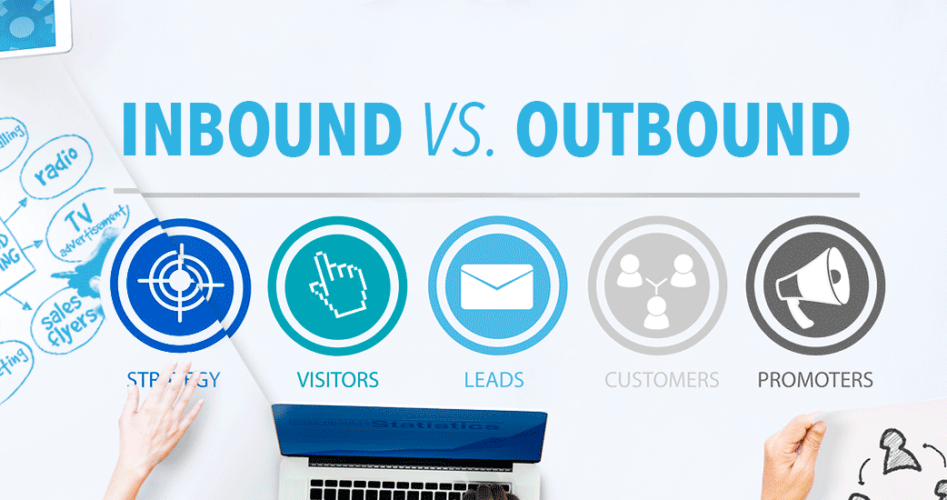An interview with
Sriram Gopalaswamy,
Marketing Head — Commercial Segment, Lenovo, India
Q. What makes Inbound Marketing beneficial for organizations right now?
Before looking at Inbound and Outbound Marketing, I’d like to discuss an intermediate success step — inbound or outbound lead, as a sales pipeline qualifier. If you look at it quantifiably, inbound leads deliver a 3–4 time higher closure rate than outbound leads. So, theoretically, Inbound Marketing (IM) is better!
However, the underlying deployment factors make the question harder to answer, something that I will talk about here. I should warn you beforehand that I’m not going to use the widely accepted ‘attract-convert-close-delight’ framework to describe Inbound Marketing in any of my answers below.
Q. Why should businesses invest in Inbound Marketing as compared to Outbound Marketing?
Typically, in a B2B scenario, it is always prudent to invest in Outbound Marketing (OM) since it is immediate. The target audience is finite and largely measurable, and it does not require complex MarTech investments. Sales teams love outbound leads — these are qualified customer opportunities and have the potential to be closed favorably.
Inbound Marketing requires patience and oodles of creativity to attract customers and provide the right kind of engagement at every step of their journey. More importantly, different customer segments could follow different journeys, which need to be mapped out — a complex task in itself. And even great marketers won’t be able to churn out five-star-rated content every time.
In a stable B2B segment, I’d advocate the 70–30 method. Spend 70% of your resources on developing immediate prospects, and invest the rest in building an IM infrastructure and, more importantly, the thinking and executive-level alignments required to make the shift. In case you want to move away from the status quo, and are contemplating an IM vs OM scenario from a fresh perspective, here’s what you can do.
If your brand awareness is significant, you should invest more in OM while pushing the business to expand on scale of reach — since people know you, you may be present in the consideration set, but missing out because of your reach or inability to communicate better. Remember, your channel partner/salesperson’s ability to project trust and close deals is key here.
If your brand awareness is low and sales reach is limited, you must invest in IM. Typically, startups fall under this category. And I can speak from experience about one such startup I recently advised. Great product, great value proposition when communicated to investors and a few alpha customers. But they struggled to attract customers who are widely dispersed without a standard method to reach them. My first piece of advice was to break the customer behavior into habits and then start with cleanly worded advice carefully placed in an online forum they frequent (a familiar surrounding) — the message phrase being quantifiably shocking to elicit clicks, and the content being delightfully engaging to read. Then lead the customers to your web page, where you provide an opportunity to engage with them in a manner that befits their expectations.

How can Inbound Marketing help brands generate higher ROI and offer better results?
Now, there are doubts about the efficiency of IM as a technique. But to come to an ROI discussion, we need to examine costs. I’ve typically noticed that the cost per lead on IM is 4–5 times of that on OM. Now, given the fact that the efficiency is 3–4 times, it is a fine line of being able to optimize CPLs (Cost Per Lead).
IM can be optimized for CPLs through the efficiency of media and creative. Often there is a tussle between both! To optimize media, one could work with media at a strategic level, define common performance indicators, and drive mutual goals to increase productivity of spends. The alternative is to look at pitting multiple media against each other in a battle for share of spends to essentially bring down costs.
To optimize creative is much harder — it includes more insight-led questions that stare at marketers every day. It is about merging customer insights with contemporary topics of interest in a subtle yet persuasive manner. A not-so-great yet I-have-to-use-here example is to try to pitch a Client Security feature by tying it to a Netflix Black Mirror episode!
Another problem marketers face is that not all the best ROI models deliver scale. Scale and ROI continue to trouble the likes of myself to no end and my primary responsibility is to crack the equation every time. But I do try to overcome the problem by using a mix of IM and OM — OM delivers scalability by uncovering large potential requirements, while IM delivers ROI.
According to you, what are the best Inbound Marketing strategies for a successful campaign?
I would recommend the following Inbound Marketing strategies:
- Content on-site and search: This is the most appealing form of Inbound Marketing, where you seed content on the website and drive traffic to the site using search keywords.
- Content off-site: This is about sponsoring space on a third-party site and placing content to drive site visits.
- Personal branding: In a country like India, where we create heroes every day, personal branding on social media can be a very effective tool to generate interest.
- Contact generation: This involves a lot of creative ideation to find out what could be the best method to prepare a prospect list. A small prospect list is easy. Getting to a larger prospect list can be a tricky proposition — and sometimes you can use a content off-site strategy with unrelated, but more clickable, content to generate leads.
How can Inbound Marketing use digital marketing to drive better results?
Digital marketing is an evolving field and I strongly recommend a continuous experimentation methodology to keep abreast of new technologies. Here is what I have experienced while experimenting with many things in general:
What’s your go-to Inbound Marketing checklist for greater impact?
I would break down the components of a successful Inbound Marketing campaign in the following manner:
- Content creation: This is the most difficult thing to start. Force a biweekly Friday deadline to get things moving. Remember that content can be tweaked over a period of time and, more importantly, re-hashing and re-promoting your old posts is completely acceptable. Long-form content shows your expertise in the subject and attracts CXOs. One of the easiest and most liked forms of content is resource lists. Your readers should be able to draw a distinct personality from all your content.
- Defining a next-step engagement: It could be a free trial or download. At the least, put up a quiz so you can attract people and collect email IDs for your newsletter!
- Contact generation through some crazy thinking: Look at some alternate ways of getting contact details of potential customers and building your database. You could create what I call ‘side content’, which is not related to your business but still targets the same customer base. Or collaborate with a business that is complementary in offering but targets the same audience as you.
- Split-second response generation: This is the most overlooked part of demand generation today. In most cases, queries are passed around until someone picks them up, without giving a thought to what kind of enquiries may come on. It makes sense to think through all possible cases of inbound interest, and prepare appropriate revert mechanisms for the same. A lot of it could be how to ensure staying in touch for six months or more until an opportunity pops up. My recommendation is to have a qualification mechanism in place that can respond to customers ideally within the hour.
What are the digital platforms that you usually target that are effective from a business point of view?
Today, most companies have a reliable CRM solution — a great starting point for Inbound Marketing. Google follows the list for intelligent keyword search targeting and re-marketing. For Lenovo, I am slowly realizing the potential that LinkedIn offers, and my focus on this platform is gradually growing. I am not so active on Facebook for targeting businesses based purely on my judgement from the last few campaigns I’ve run on this platform.
How much time should a brand invest to quickly generate results?
When you do start a pilot, it takes at least three months to effectively monitor and calibrate actions to improve results. I typically define early signs within a two-week time frame and a follow-through every week. Post a three-month pilot, it takes us another quarter to scale up and run a campaign effectively.
Which tools or platforms are most handy for effective Inbound Marketing?
There are three things to look at while implementing IM. You need a platform for contact discovery — so either use digital means like Crunchbase, Linkedin, and InsideView, or go the traditional route like most B2B companies — telecalling.
You’ll then need a platform to register multiple signals from the customer. This platform could be an extension of your CRM or a dedicated marketing automation platform such as Marketo, Eloqua, or Unica.
You need to apply your industry-specific parameters to know how to interpret signals (classify them as strong or weak) and tweak your platform accordingly over a period of time. For some, an email from the customer can be the strongest indication of willingness to buy. For others, an email is just a query and not a purchase intent.
According to you, which brands have mastered the art of Inbound Marketing, and why?
I think premier educational institutes do some of the best work in Inbound Marketing.

Harvard Business Review, I consider as a stellar example in drawing target audiences across their various educational and industry connect initiatives. Interestingly, they have been at it long before the digital beast came into existence. On a more recent note, I think Zendesk is creating a plethora of exciting content at different levels, and Trello is using customer advocacy as a potent tool.















